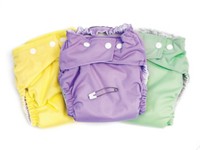Advertisement
Grab your lab coat. Let's get started
Welcome!
Welcome!
Create an account below to get 6 C&EN articles per month, receive newsletters and more - all free.
It seems this is your first time logging in online. Please enter the following information to continue.
As an ACS member you automatically get access to this site. All we need is few more details to create your reading experience.
Not you? Sign in with a different account.
Not you? Sign in with a different account.
ERROR 1
ERROR 1
ERROR 2
ERROR 2
ERROR 2
ERROR 2
ERROR 2
Password and Confirm password must match.
If you have an ACS member number, please enter it here so we can link this account to your membership. (optional)
ERROR 2
ACS values your privacy. By submitting your information, you are gaining access to C&EN and subscribing to our weekly newsletter. We use the information you provide to make your reading experience better, and we will never sell your data to third party members.
Environment
Pondering Waterless Urinals
June 13, 2011
| A version of this story appeared in
Volume 89, Issue 24
I ’m not sure where James Krug, CEO of Falcon Waterfree Technologies, gets his idea that “water from flushing promotes the growth of bacteria as well as the creation of unpleasant odors” as opposed to the urine itself (C&EN, May 9, page 56). Doesn’t he know that urine is mostly water? Has he never smelled a diaper that has been wet an hour or so? Or a cloth diaper that has been in a diaper pail for a few hours?
I have used waterless urinals several times (in state and national parks in Texas). They are a great invention, especially in areas with limited water supplies, but they have never been odor-free, which I attribute to urine that has not drained down into the trap—again showing that the urine itself produces ammonia, not added water.
Phil Petersen
League City, Texas
The Newscripts article about waterless urinals was interesting. However, waterless urinals have been in use for centuries; they’re called outhouses!
Charles A. Soucek
Cincinnati




Join the conversation
Contact the reporter
Submit a Letter to the Editor for publication
Engage with us on Twitter